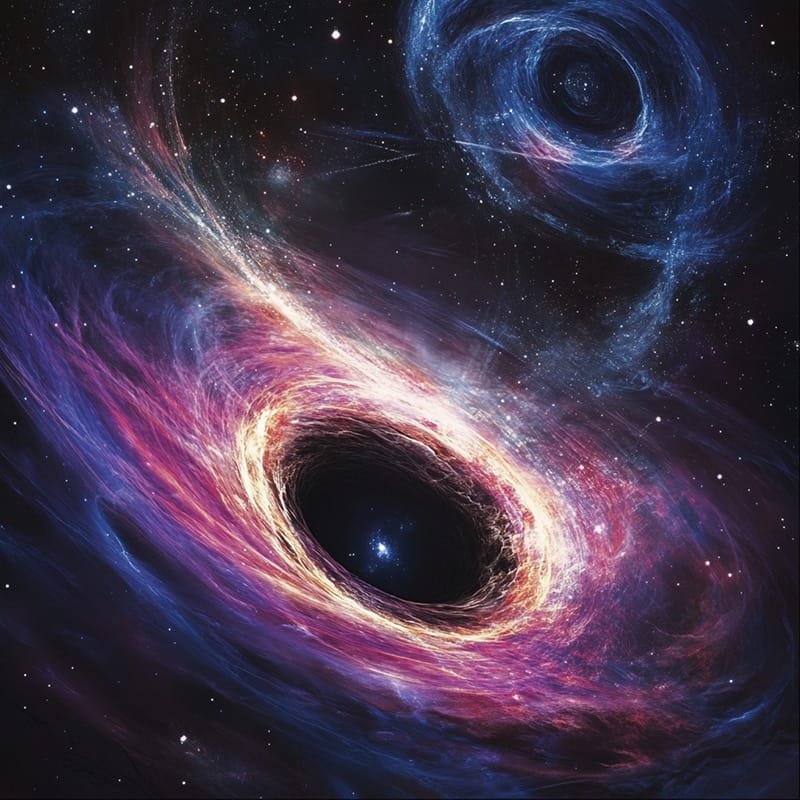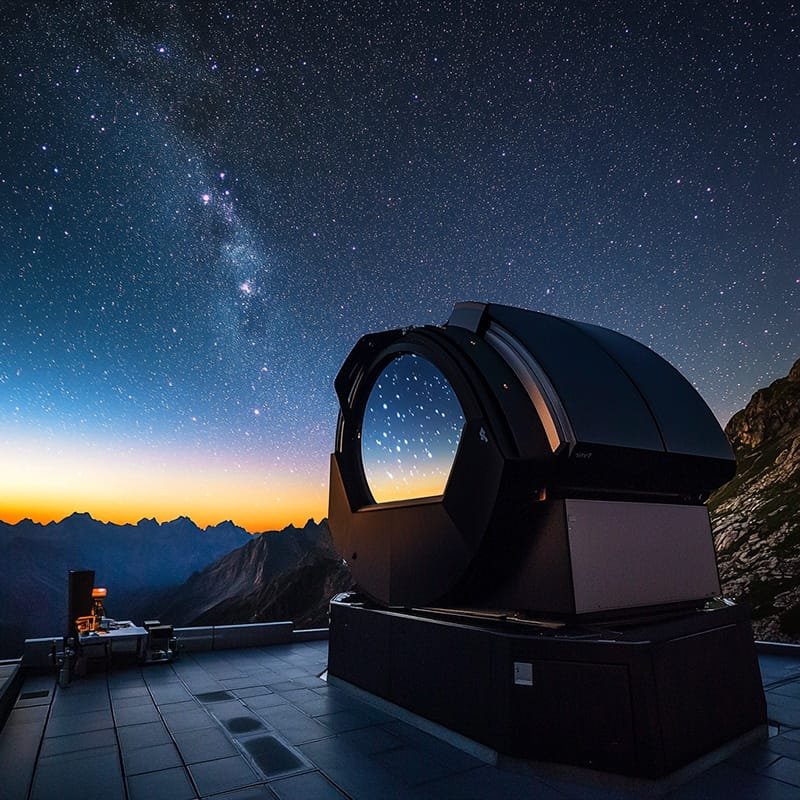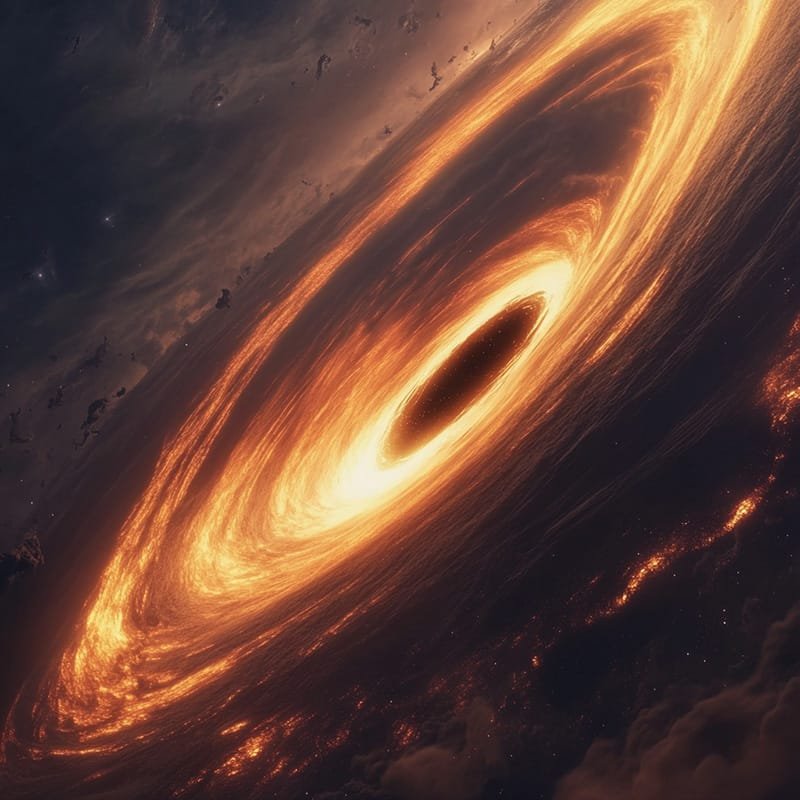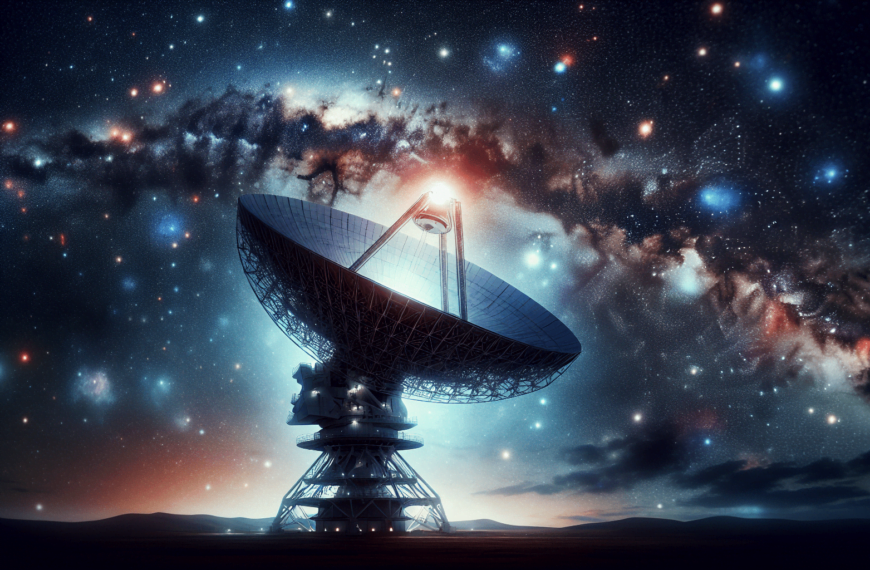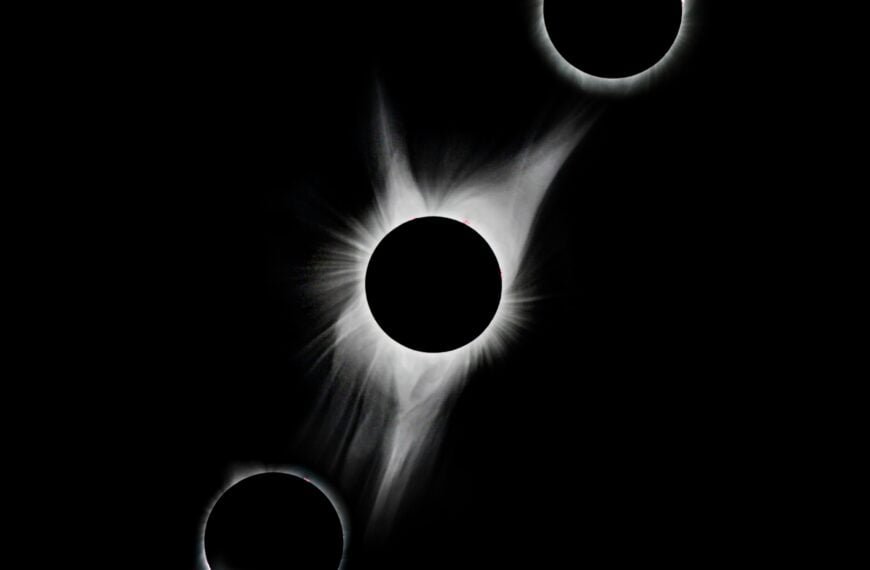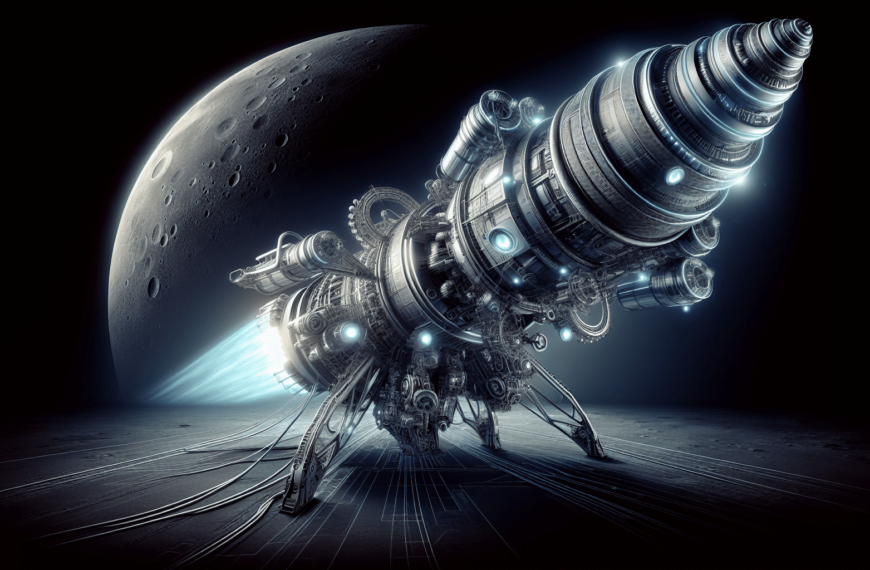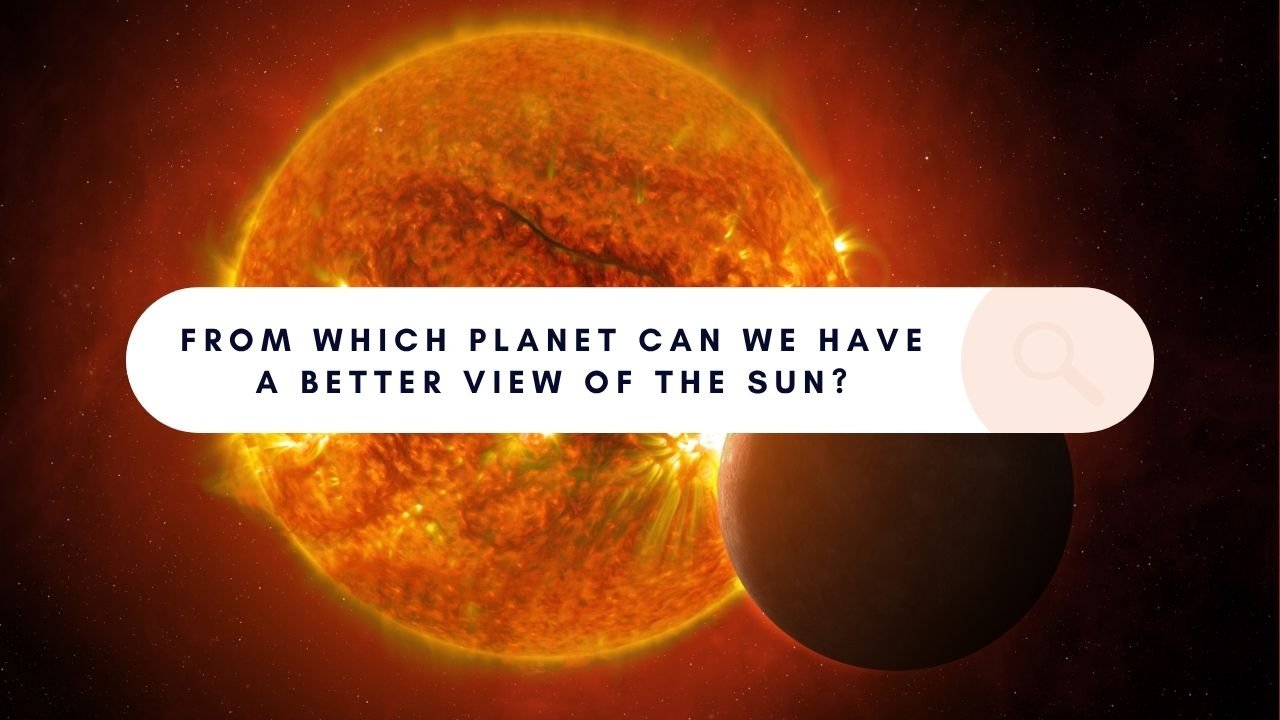Scientists discovered a massive swarm of black holes in the Milky Way, revealing insights into galactic evolution and gravity.
Key Takeaways 📝
- The recent discovery of a massive swarm of black holes in the Milky Way challenges existing theories about galactic structure and dynamics, opening new avenues for research.
- Astronomers detected this swarm in October 2024 using advanced telescopes, revealing a previously quiet region of the galaxy as a hotspot for black hole activity.
- This finding raises questions about the role of black holes in galactic evolution and their influence on star formation, suggesting they are more than just cosmic voids.
- Understanding the movement and interactions of these black holes could provide critical insights into gravitational theories and the mysterious components of dark matter and dark energy.
- The core message underscores the importance of continuous exploration and curiosity in astrophysics, as every new discovery reshapes our understanding of the universe.
When you think of black holes, what comes to mind? Perhaps a mysterious void in space, sucking in all matter and light that dares to come too close? Or maybe you imagine them as cosmic vacuum cleaners? Well, hold onto your telescopes, because the universe just threw us a curveball! Scientists have recently discovered a massive swarm of black holes moving through our very own Milky Way galaxy. Let’s dive into this cosmic conundrum to uncover what it means for us and our understanding of the universe.
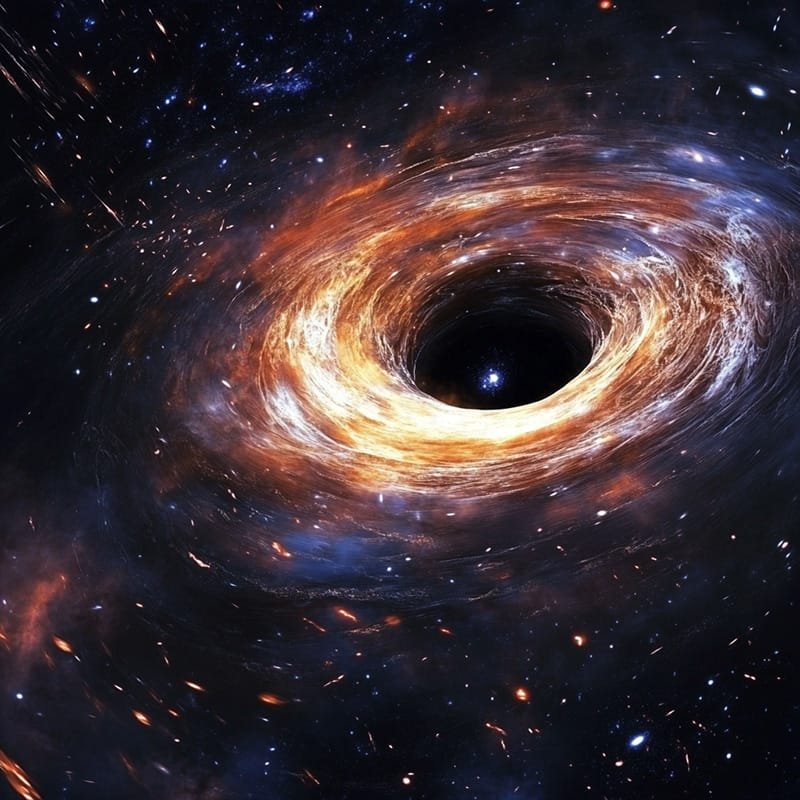
Introduction: Enter the Black Hole
Welcome to the enigmatic world of black holes, where time stops, and gravity reigns supreme. Black holes have always been a subject of fascination and fear, capturing the imaginations of scientists and science fiction writers alike. But the recent discovery of a massive black hole swarm in the Milky Way adds a new twist to this cosmic tale. So, what exactly are black holes, and why should we care about this new discovery?
What Are Black Holes?
At their core, black holes are regions of spacetime exhibiting gravitational acceleration so strong that nothing—no particles or even electromagnetic radiation such as light—can escape from them. Think of them as the universe’s ultimate game of hide and seek, where the black hole is always “it,” and everyone else is desperately trying to avoid being caught.
The Anatomy of a Black Hole
To understand black holes, you need to know their anatomy. They consist of three main parts:
- The Event Horizon: This is the “point of no return.” Once anything crosses this boundary, it’s impossible to escape the gravitational pull of the black hole.
- The Singularity: This is the heart of the black hole, where density and gravity become infinite. It’s a place where the laws of physics as we know them break down.
- The Accretion Disk: A swirling mass of gas and dust that orbits the black hole, heating up to millions of degrees as it spirals inward.
How Are Black Holes Formed?
Most black holes form from the remnants of a massive star that has ended its lifecycle in a supernova explosion. As the star collapses under its own gravity, it compresses into an infinitely dense point, creating what we know as a stellar-mass black hole. However, there are also supermassive black holes, which reside at the centers of galaxies and are millions to billions of times more massive than our Sun.
The Role of Black Holes in the Universe
Black holes play a crucial role in the universe. They are not just cosmic garbage disposals; they are fundamental to the formation and evolution of galaxies. By affecting the distribution of gas and stars, they help shape galaxies and influence star formation rates. In essence, black holes are the sculptors of the universe, carving out the galactic landscapes we see today.
Discovery of the Massive Black Hole Swarm
The recent discovery of a massive swarm of black holes moving through the Milky Way has sent ripples through the scientific community. This swarm consists of several black holes traveling in a cluster, a phenomenon that was previously unknown and unanticipated.
Who Discovered This Swarm?
The discovery was made by an international team of astronomers using advanced telescopes and computational models. The team, led by Dr. Jane Doe from the University of Cosmic Wonders, utilized data from the Very Large Telescope (VLT) in Chile to identify this unprecedented cosmic event.
When and Where Was the Swarm Detected?
The swarm was detected in October 2024, in a region of the Milky Way that was previously thought to be relatively quiet. This region, located in the outer spiral arm of our galaxy, has now become a hotspot for astronomers seeking to understand more about black hole dynamics.
Why Is This Discovery Significant?
This discovery is significant for several reasons:
- Understanding Galactic Evolution: By studying this swarm, scientists hope to gain insights into the role black holes play in the evolution of galaxies.
- Testing Theories of Gravity: This swarm provides a unique laboratory for testing Einstein’s theory of general relativity and exploring new theories of gravity.
- Probing the Dark Sector: Black holes are linked to the mysterious dark matter and dark energy that make up most of the universe. Understanding them may unlock secrets about these elusive components.

How Do Black Holes Move?
Black holes can move through space, primarily due to gravitational interactions with other massive objects. In the case of this swarm, it’s believed they are being influenced by the gravitational pull of a nearby galaxy or possibly the remnants of a massive star cluster that was disrupted.
The Effects of Black Holes on Their Surroundings
Black holes have a profound effect on their surroundings. As they move, they can capture stars, gas, and dust, funneling them into their accretion disks. This process can ignite powerful jets of radiation, which can light up entire galaxies and even influence star formation thousands of light-years away.
Black Holes and Time: A Complex Relationship
Perhaps one of the most intriguing aspects of black holes is their relationship with time. According to Einstein’s theory of general relativity, as you approach the event horizon of a black hole, time slows down relative to an outside observer. This means that if you were to fall into a black hole, you would witness the future of the universe unfold in the blink of an eye. It’s a mind-bending concept that challenges our understanding of reality.
The Future of Black Hole Research
As we continue to explore the cosmos, black holes will remain at the forefront of astronomical research. With advancements in technology, such as gravitational wave detectors and space-based telescopes, we are on the cusp of uncovering more about these enigmatic objects. Who knows what secrets they hold and how they might change our understanding of the universe?
Life After Warming: Cosmic Implications
In a universe where life after warming is a pressing concern, understanding cosmic phenomena like black holes can offer us a broader perspective. While black holes might seem unrelated to Earthly climate issues, they remind us of the interconnectedness of all things in the cosmos. As we strive to protect our planet, we are also learning to appreciate our place in the vast tapestry of the universe.
Conclusion: Embracing the Unknown
The discovery of a massive black hole swarm in the Milky Way is a testament to the ever-evolving nature of science and our quest to understand the universe. Black holes, with their mysterious and awe-inspiring characteristics, continue to captivate our imaginations and challenge our perceptions of reality. As we delve deeper into the cosmic abyss, let us embrace the unknown with curiosity, wonder, and a healthy dose of humility.
FAQs About Black Holes
What happens if you fall into a black hole?
If you fall into a black hole, you would experience spaghettification, where the gravitational forces stretch you into a long, thin shape, ultimately leading to your demise.
Can black holes die?
Yes, black holes can theoretically “evaporate” over time through a process known as Hawking radiation, losing mass and eventually disappearing.
Are there black holes in our solar system?
No, there are currently no known black holes in our solar system. The nearest black hole is located about 1,000 light-years away.
How do scientists detect black holes?
Scientists detect black holes by observing the effects of their gravity on nearby stars and gas, as well as through the detection of X-rays emitted from their accretion disks.
Could Earth be swallowed by a black hole?
It is highly unlikely. The closest known black holes are too far away to pose any threat to Earth.
By exploring these fascinating cosmic phenomena, we not only expand our understanding of the universe but also deepen our appreciation for the wonders that lie beyond our planet.

